
EDITOR’S NOTE
Remember this guy?

This Pakistani cricket fan's disappointed expression transforms into Studio Ghibli's soft pastels with three words: "Ghiblify this image."
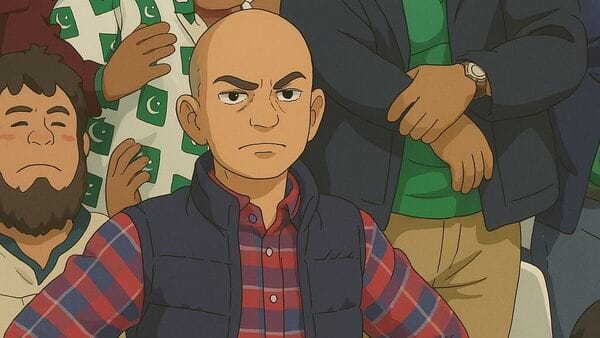
Ghiblification of Muhammad Sarim Akhtar
Ever since the dawn of genAI, one question has dominated every debate on copyright: Who really owns the output? We want to know what you think:

If you know the answer, hit reply
Google's Imagen 3 conjures a photorealistic Asian woman against neon-lit skyscrapers from a single line prompt: A portrait of an Asian woman with neon green lights in the background, shallow depth of field
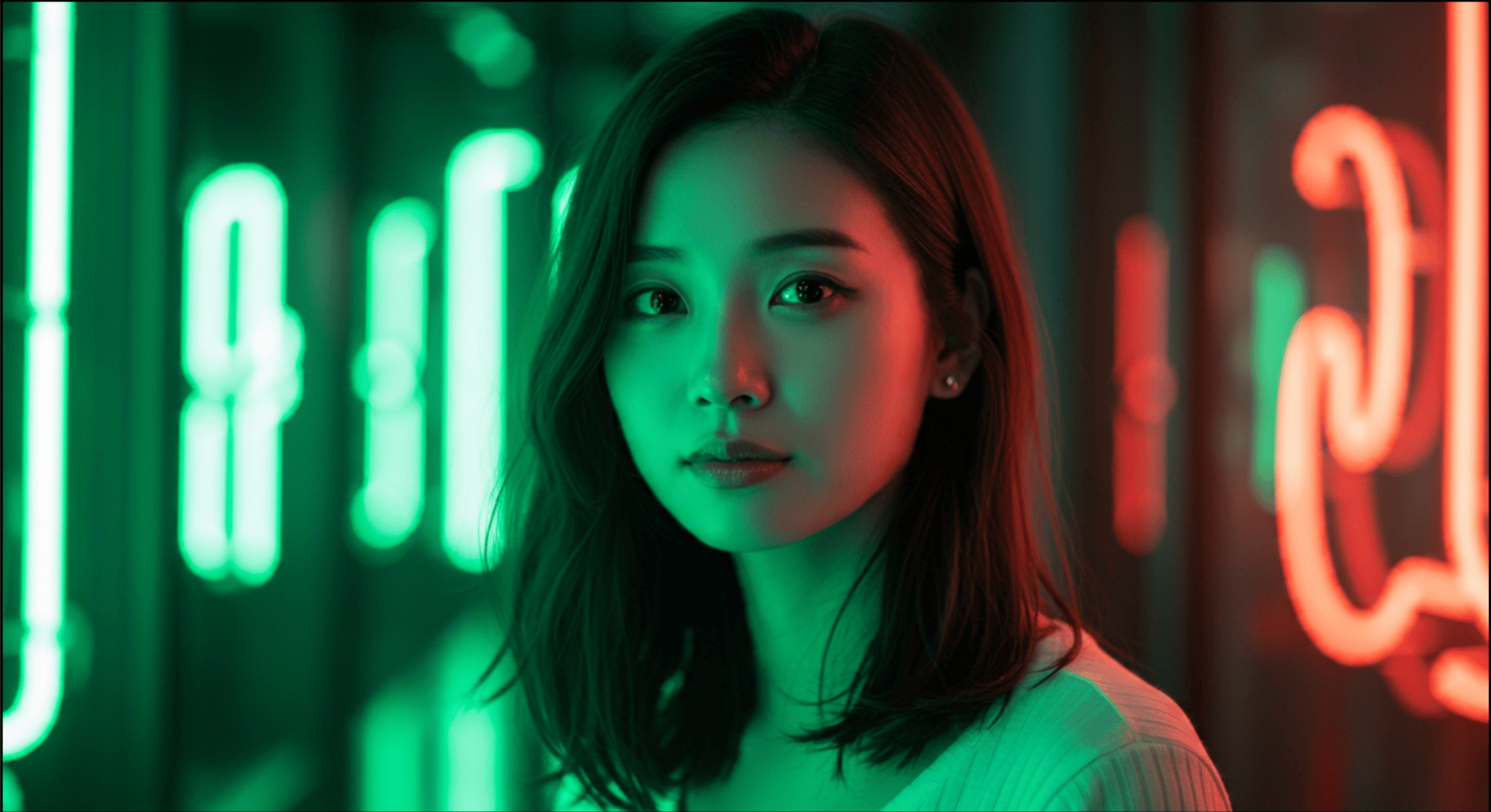
But while this technology is reshaping creative industries, it's also creating a massive, unresolved legal tangle. When an artificial intelligence creates a photograph, a piece of code, or a poem, a fundamental question arises: Who is the author, and who owns the copyright?
Dear future-proof humans,
Welcome to a new edition of Nanobits. In today’s newsletter, we will explore some of the most counterintuitive realities emerging from the intersection of genAI and intellectual property law, the key battlegrounds where the future of creation is being shaped.
So, what exactly can AI do?
The "Ghiblify" transformation barely scratches the surface of AI's creative capabilities. AI models now generate everything from photorealistic portraits to complex 3D meshes for gaming environments.
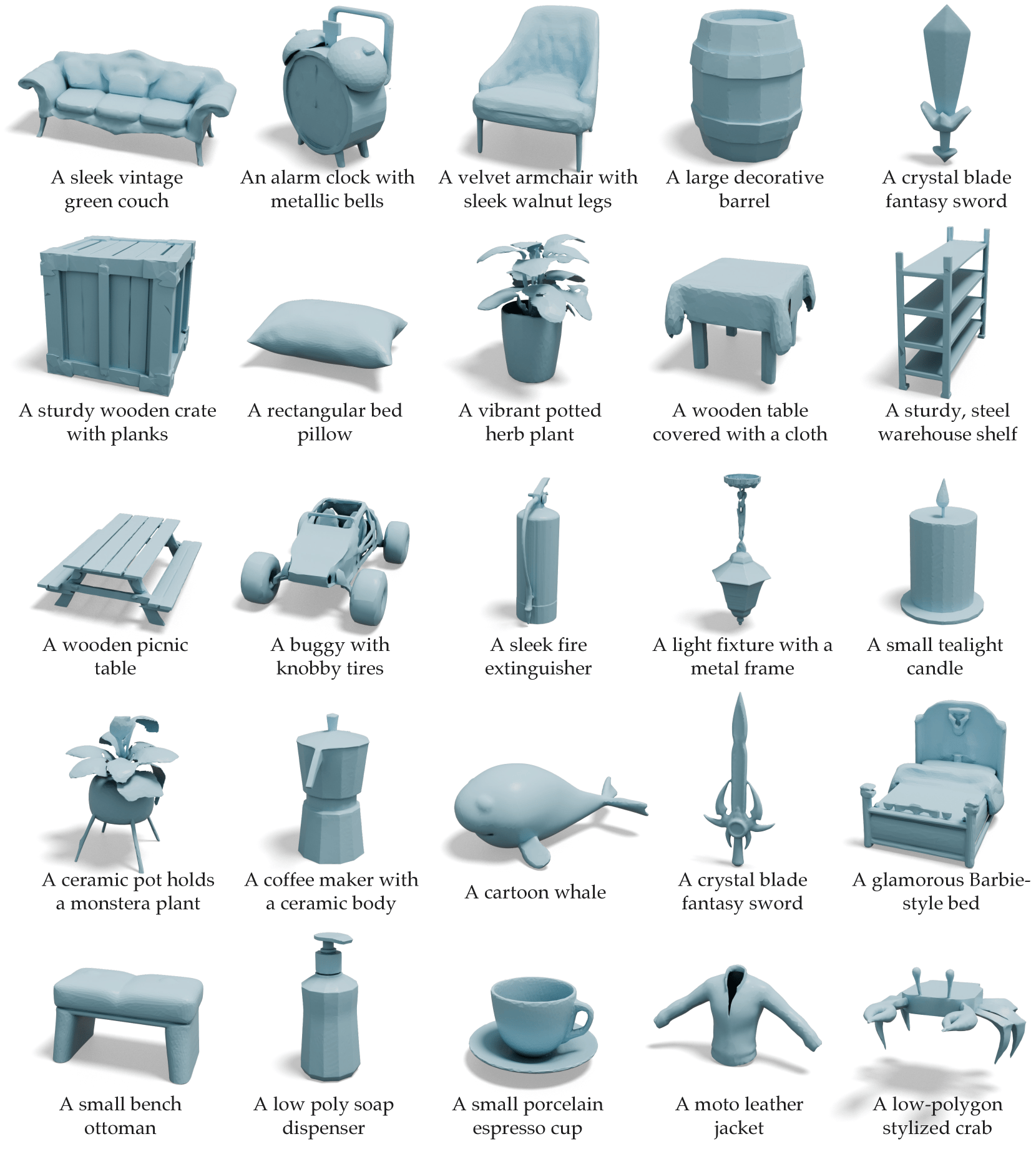
Neural style transfer can apply Van Gogh's brushwork to any photograph, with controllable parameters down to stroke size.

Voice cloning requires just one minute of audio: Amazon once offered Amitabh Bachchan's voice for Alexa responses before discontinuing the feature.
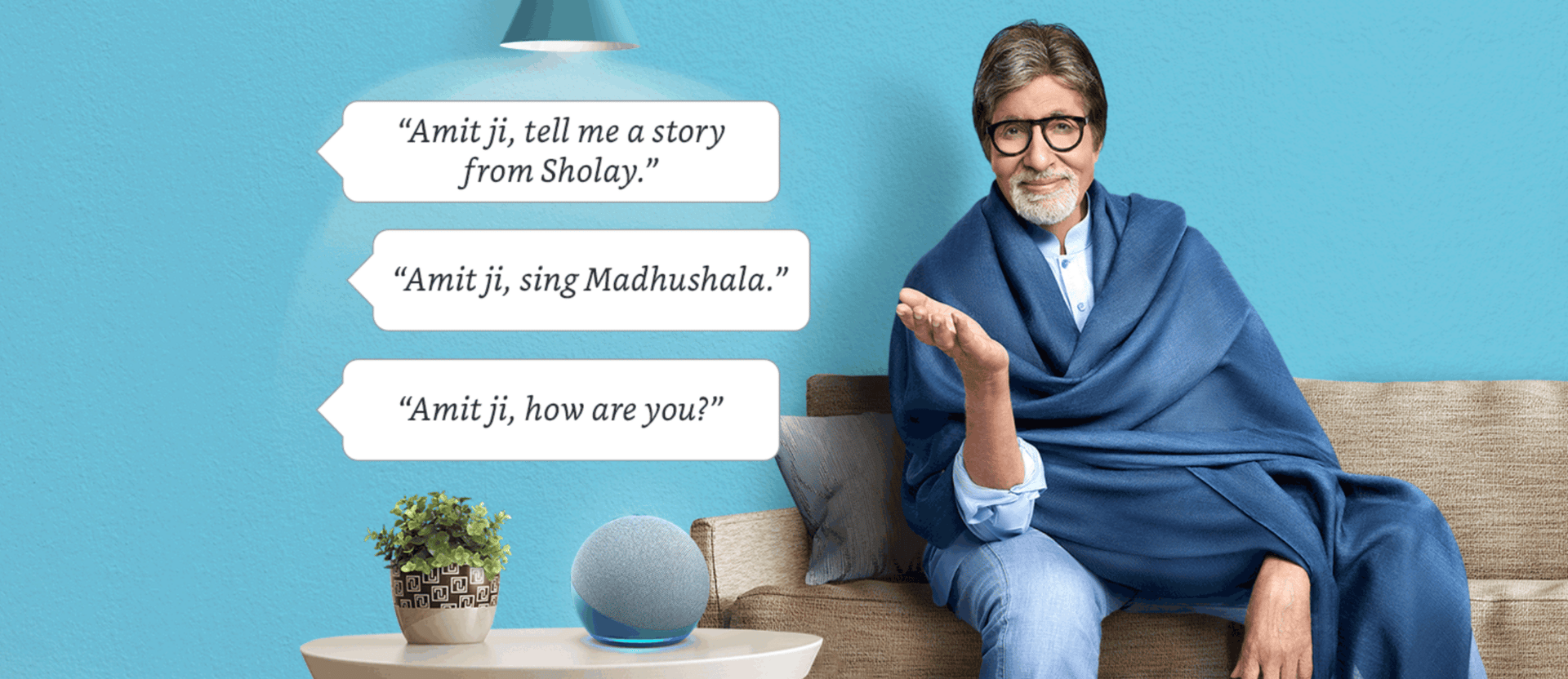
The applications span industries. Marketing teams can generate campaign-ready images without relying on photographers. Game developers create 3D objects from text descriptions, such as "a glamorous Barbie-style bed" or "a low-polygon stylized crab." Musicians feed ghazals to AI and receive complete songs. Even Spotify struggles to identify AI-generated tracks flooding their platform.
However, what makes this legally explosive is that these aren't simple filters or templates. AI models make countless creative decisions, including composition, lighting, color palette, and emotional tone, that traditionally defined human authorship. When AI handles 99% of creative expression, leaving humans to contribute only prompts, our entire framework for ownership begins to collapse.
Evolution of creative control, from a tool to a creative partner
AI’s growing range of creative abilities forces us to confront a fundamental question: When does a tool become a creator?
For centuries, tools simply extended human hands. A charcoal stick or pencil captured every motion and intention of the artist. Even with modern devices like the iPad and Apple Pencil, authorship remains clearly human. The tool enhances technique, detecting pressure, tilt, and texture, but it never decides what to draw or how to express an emotion.
Then came software. Photoshop’s “healing brush” or “object removal” tools started to blur the line. You click a blemish, and the program decides how to fill in missing pixels. The software makes creative choices, but we still consider the final image the photographer’s work.
Generative AI changes that relationship entirely. A single sentence can summon an image, melody, or paragraph, while the model determines the composition, tone, and detail. The user no longer shapes the expression directly; the AI does. It behaves less like a brush and more like a collaborator, an unpredictable one with its own patterns and logic.
This shift breaks the clean separation between idea and expression that underpins intellectual property law. Patents protect functional ideas, while copyright protects creative expressions fixed in a tangible form. However, when a person provides a text prompt (the idea) and an AI generates the visual or written output (the expression), the boundary between the two collapses. Where does human creativity end, and where does machine authorship begin?
A prompt cannot be patented; it's not an industrial process or device. Yet the resulting image, while clearly an expression, lacks human authorship in its creation. AI exists in a legal void that our framework never anticipated: neither a tool nor an author, but something unprecedented in between.
Who is the creator/author: is a prompt creative input?
If AI occupies this unprecedented middle ground, who actually owns what it creates?
Under current law, copyright protection requires "significant creative human input and control over the final output." The U.S. and most jurisdictions maintain a bedrock principle: only human authors qualify for copyright. This immediately creates a problem: when AI generates the actual expression, where's the human authorship?
The answer might lie in the prompt itself.
Take a simple prompt, for instance. A short instruction: “a red apple on a table”, isn’t creative enough to earn protection. It conveys an idea, not a unique expression. However, a complex, multi-paragraph prompt that describes lighting, mood, and camera angles, what some call a “cinematographic prompt”, begins to resemble creative authorship. In such cases, the text of the prompt itself may be copyrightable, even if the AI-generated image that follows is not.
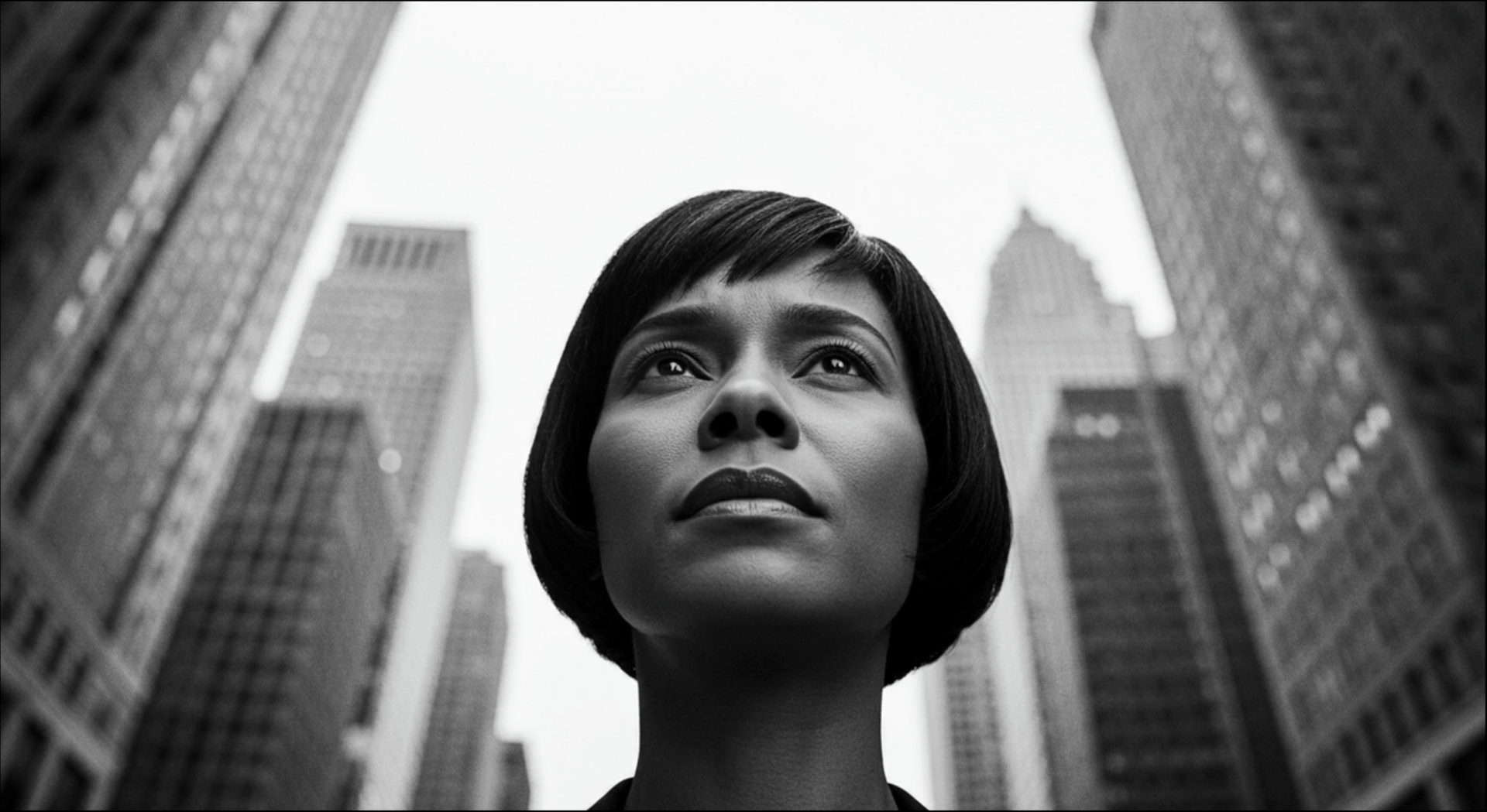
Prompt: A low-angle close-up shot, in stark black and white, focuses on a woman with a short, precisely cut bob. Her expression is one of deep concern; her eyebrows are slightly furrowed, her mouth drawn into a thin line, and her eyes hold a worried intensity. The high contrast of the black and white photography emphasizes the texture of her skin and the lines around her eyes, accentuating her worried expression. The background is a blurred but imposing array of tall skyscrapers, their forms rendered in varying shades of grey, creating a sense of depth and scale. The low angle, shooting upwards, emphasizes her upward gaze, suggesting a sense of being overwhelmed by the weight of her worries within the vast urban landscape. The overall mood is one of serious apprehension, a powerful and poignant image of a woman grappling with anxieties within a monumental city.
Yet this creates a bizarre paradox. The prompt might be copyrightable, but the resulting image might not be, because AI, not a human, executed the actual creation. Two people can use the same detailed prompt in different AI models and get completely different outputs. This inconsistency reveals who truly controls the expression: the model. The prompt guides the idea, but the model defines the visual or textual realization.
That tension has led some to suggest that AI outputs could be viewed as joint creations, though courts remain hesitant. Instead, the commercial world has moved faster than the law. Microsoft's GitHub Copilot offers indemnification for paid subscribers; if AI-generated code inadvertently reproduces copyrighted material, Microsoft covers liability. OpenAI and Anthropic's terms of service simply grant users rights to outputs, treating their platforms like "kitchens" where you bring ingredients (prompts) and leave with bread (outputs).
Now, the question is, "How should we understand this and work with our legal teams to still be able to copyright what we are generating?" The uncomfortable answer: nobody really knows. Companies are betting on indemnification clauses and hoping courts eventually clarify whether prompts constitute sufficient human creativity to claim ownership over AI's increasingly sophisticated outputs.
The new IP battleground: style, voice, and data ownership
If authorship in AI-generated work is already a gray zone, the waters get murkier when we move beyond copyright to identity, data, and style. The question is no longer only who created the work, but whose likeness, data, or voice helped make it possible.
Style transfer sits at the center of this new debate. AI models learn from countless images, absorbing artistic signatures as they go. When users type prompts like “Ghiblify this image,” the model applies the soft, pastel aesthetic of Studio Ghibli’s films without copying any specific artwork. Legally, that stays clear of copyright infringement because copyright protects expression, not style. Yet it brushes up against personality and image rights, which shield an artist’s recognizable identity from commercial exploitation.
The safer route? Describing the style, “soft tones and gentle lighting”, without naming the artist or studio.
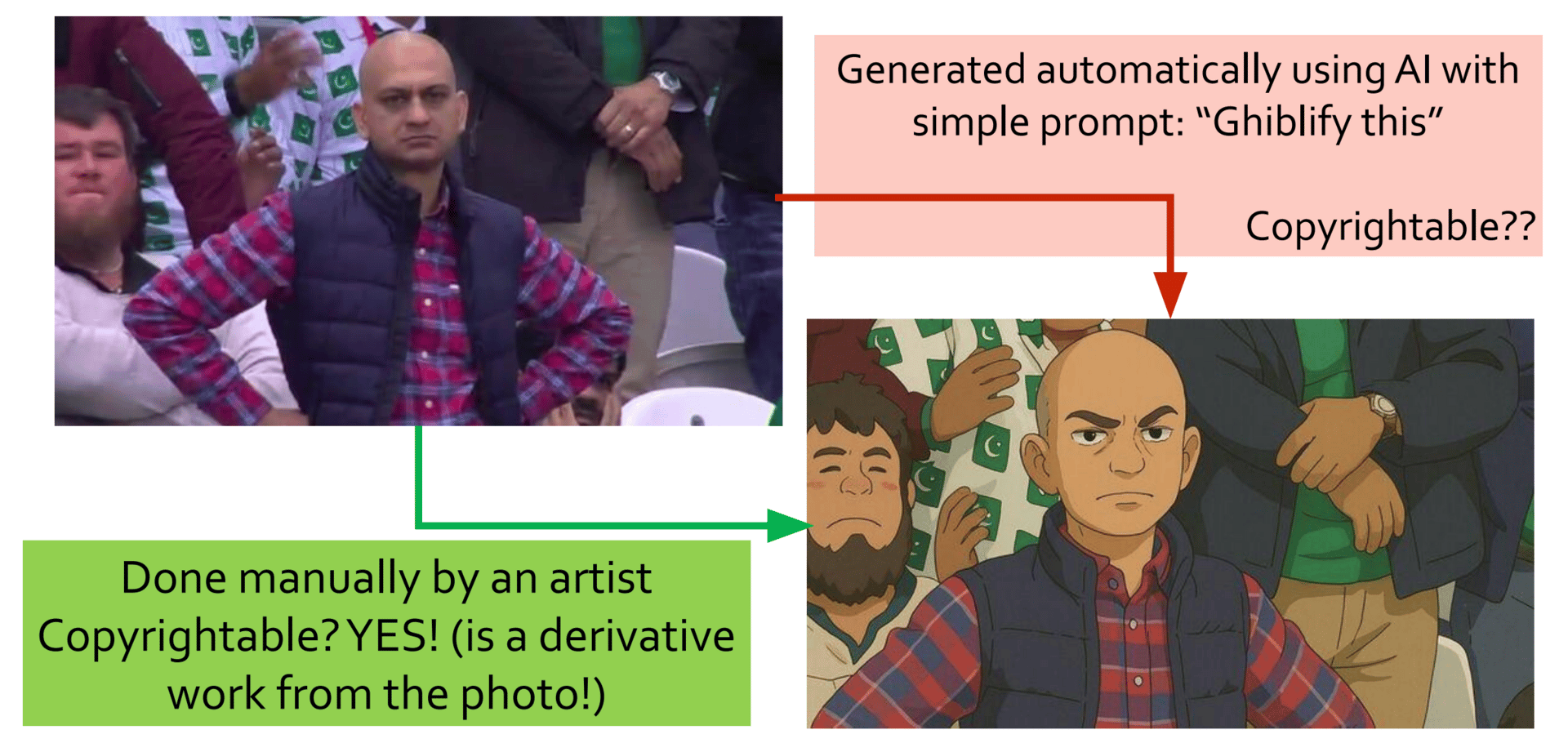
Celebrity voice cloning presents an even clearer case of negotiation over law. When Amazon introduced Amitabh Bachchan’s voice for Alexa, it didn’t test legal limits; it paid for the necessary permissions. These licensing deals acknowledge that a voice or visual likeness carries economic value separate from any copyrighted work. Similar concerns are now emerging in entertainment contracts, where actors are demanding explicit clauses covering the use of their voices, faces, or gestures by AI in future projects.
Copyright issues in training AI models
Training data raises another layer of risk. GitHub Copilot, trained on open-source repositories, can sometimes generate lines of code identical to existing copyrighted material. Companies adopting such tools rely on indemnification clauses, which are promises by providers like Microsoft to defend and compensate paying users in the event of lawsuits arising. These protections, however, apply only to licensed versions, not free users.
The courts are starting to define boundaries through landmark cases.
In one pivotal ruling, authors sued Anthropic for training its model Claude on millions of pirated books. The court called the training process “spectacularly transformative,” since the model extracted patterns of language rather than reproducing text. Using purchased books that were destructively scanned into digital form was deemed fair use. But the same could not be said for pirated material. The court rejected Anthropic’s “later purchase” defense. It fined the company $3,000 per infringed work, emphasizing that legality depends as much on how data is acquired as on what the model learns.
Is AI undermining the very reason copyright exists?
Perhaps the most profound challenge AI poses is not to specific legal rules, but to the fundamental economic principle behind copyright law itself.
Historically, the rationale for intellectual property rights has been to incentivize creators. Think of a stand-up comedian. They invest immense time and risk developing a new hour of material. They protect that high up-front investment by banning cameras at live shows to sell tickets. Once the tour is over, they often release the special for free online, using it as a brand-builder for the next tour. This is the essence of copyright: granting a temporary monopoly to let creators recoup high initial costs on works that have a very low cost to reproduce.
AI flips this economic script. As the source material notes, with a powerful AI model, "even the initial cost of producing a creative work can be low." This drastically reduces the risk and investment needed from human creators. It raises a monumental question: If the initial risk and cost are nearly eliminated, do we need the same strong copyright protections to promote creativity? Of course, the counter-argument is that we still need to protect human creators so that their work, which is required for AI training, isn't simply substituted entirely.
The Takeaway: This is the deepest challenge from AI. It calls into question the fundamental economic and social contract that has supported creative industries for centuries, forcing us to ask why copyright exists and who it is meant to serve in this new era.
End note
If copyright’s economic foundation collapses when creation demands no investment, what remains?
The tool–author divide was only the first casualty. AI doesn’t blur boundaries; it erases them. Ownership now hinges on prompt sophistication, writing detailed, cinematographic instructions, avoiding naming styles, and maintaining the illusion of control. Yet even that offers no certainty when identical prompts yield different results across models.
Commercial practice has outpaced legal doctrine. Companies offer indemnity, platforms promise usage rights, but these are quick fixes for a deeper fracture. We’re all creating in the dark, trusting that our prompts are expressive enough, our transformations are fair enough, and our licenses are protective enough.
So, if AI-generated content floods every market, does human creativity become priceless or worthless? When anyone can “Ghiblify” anything, do we protect the prompter, the style originator, or accept that ownership itself no longer matters?
Maybe, five or ten years from now, people will value live music and real experiences far more than anything recorded or replicated. When machines create everything, the last scarce commodity might be us, humans!
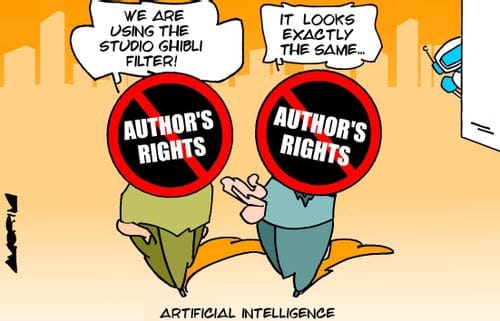
If you liked our newsletter, share this link with your friends and request them to subscribe too.
Check out our website to get the latest updates in AI
.png)

![How Steel Balls Are Forged [video]](https://laughingsquid.com/wp-content/uploads/2025/09/Steel-Ball-Forging-.jpg)

